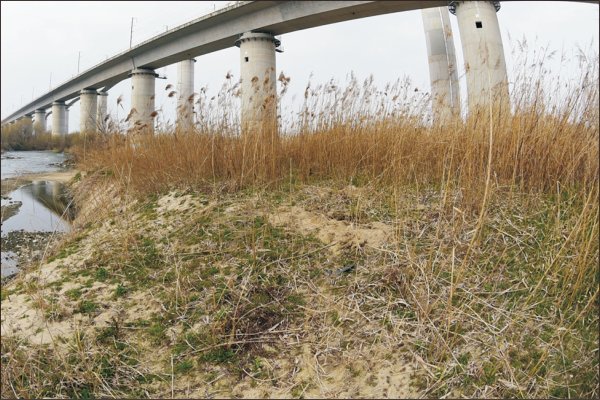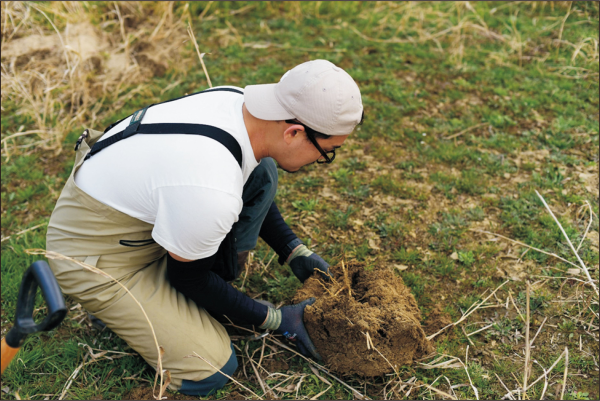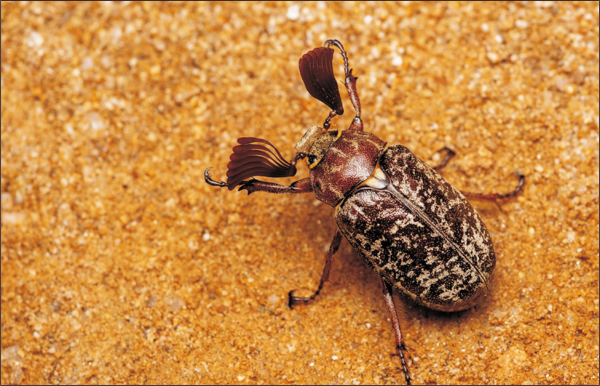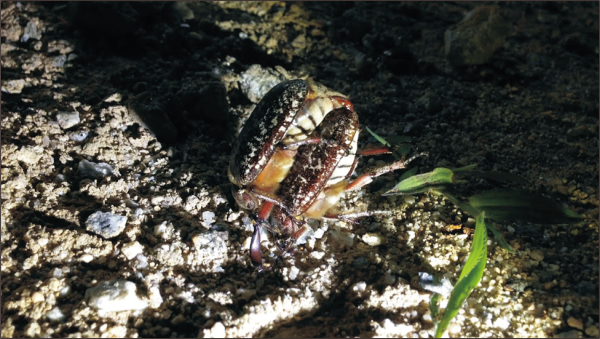Introduction
Polyphylla laticollis manchurica Semenov, 1900 is the largest species of Melolonthinae Leach in the Republic of Korea (Kim, 2010; 2011). It is distributed throughout East Asia, including China, the Korean Peninsula, and Japan. Adults of P. l. manchurica are nocturnal and are attracted to light sources around sandy areas near rivers. Although P. l. manchurica is relatively abundant, its population has declined significantly since the 1970s due to river improvement projects and subsequent habitat destruction (Kim, 2011). Presently, this species is listed on the Red List of the Republic of Korea and classified as Critically Endangered (National Institute of Biological Resources, 2023).
Despite the scarcity of the remaining habitats of P. l. manchurica and the looming threat of its extinction, ecological understanding of this beetle species remains limited. To date, research on P. l. manchurica has been conducted only twice in the Republic of Korea. The first study, conducted by Kim (2010), focused on the taxonomy of this species and employed cladistic analysis for understanding species classification and evolutionary relationships, while the second study, conducted by Kim et al., (2013), investigated the mitochondrial genome sequence of P. l. manchurica and revealed valuable insights into its genetic makeup. Studies on the biology and ecology of P. l. manchurica in the Republic of Korea have thus far not been conducted. During an ongoing study on this Korean beetle, P. l. manchurica, we observed its mating behavior and larval habitat, thus, providing important ecological information on this critically endangered species. Moreover, our study findings could contribute to the conservation of this species by verifying anecdotal information regarding P. l. manchurica.
Case Report
This study was conducted in Cheongju City, Chungcheongbuk-do Province, near the Geumgang River Basin in the central Republic of Korea. Soil beetle surveys were conducted in this area (Kim, 2011), which has been previously known as the habitat of P. l. manchurica. Currently, this area is being developed for river maintenance work, and the newly constructed townhouses have led to the development of the surrounding environments. These new developments have increased light interference considerably at night.
Mating behavior of adult P. l. manchurica was observed around the light sources near the study site on the night of June 2021. Subsequently, in April 2022 and March 2023, various locations were excavated to a depth of 50 cm in search for larval habitats, including under trees (Rodstrom & Brown, 2017), in plant debris (Kim, 2011), riverside sand areas devoid of plants, and areas around reeds (Phragmites sp.) (Figs. 1, 2). The site under trees (Salix spp.) that was excavated was located approximately 30 m away from the river. Plant debris was mixed with dead reeds and fallen leaves, and placed sporadically. The dry sand zone was between the river and tree spot, and most reeds were in the middle of the river, resembling an island.
Results and Discussion
Hundreds of adult P. l. manchurica were observed at night from 21:00 onwards, drawn by the artificial light from street lamps and store signs (Fig. 3). Notably, an unusual mating behavior was observed among the mating individuals; during copulation, the male seemed to have clawed the female’s elytra at the edges and kept the female head faced downwards to restrict movement (Fig. 4). Whether this behavior is intended to increase mating success rates by suppressing the movement or escape of females during mating remains unclear, but is likely possible. Further observations and experiments are required to support this assumption.
During our investigation conducted in the same location, two grubs were discovered in the plant debris and three were found beneath reeds (Fig. 5). These locations were characterized by shade and moist conditions. However, no larvae were observed in trees or sandy areas.
All but one larva had a typical grub appearance (Fig. 5A). Another larva exhibited characteristics of significantly dense hair on its dorsal surface and long legs with swollen terminal segments that distinguished it from the others (Fig. 5B). These traits are generally uncommon among the grubs in the Republic of Korea. To assess this anomaly, we compared the grub with larvae belonging to the same genus (Rodstrom & Brown, 2017) and realized that the larvae showed high similarity.
In many countries, Polyphylla spp. are considered pests, because their larvae consume plant roots (Beers et al., 1993; Downes & Andison, 1941; Ritcher, 1966; Young, 1988). Notably, unusual-looking larvae were observed under reeds gripping the rootlets, rather than in plant debris. Considering these observations, we can assume that P. l. manchurica in the Republic of Korea undergoes the larval phase by feeding on reed roots. As this species is legally protected owing to its “critically endangered” status, our investigation was restricted, resulting in fragmented information. However, this initial field study represents a decisive step in collecting clues regarding the biology of P. l. manchurica, that can support conservation efforts to prevent its extinction.





